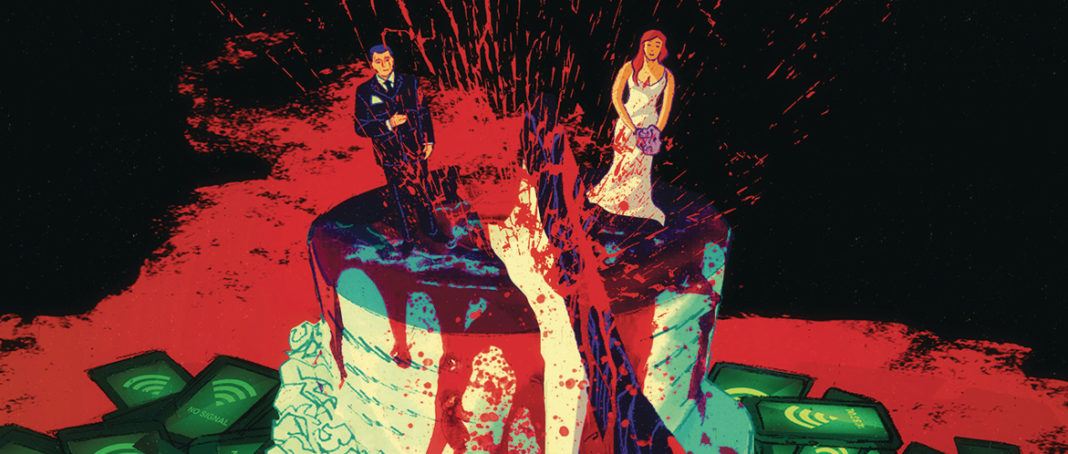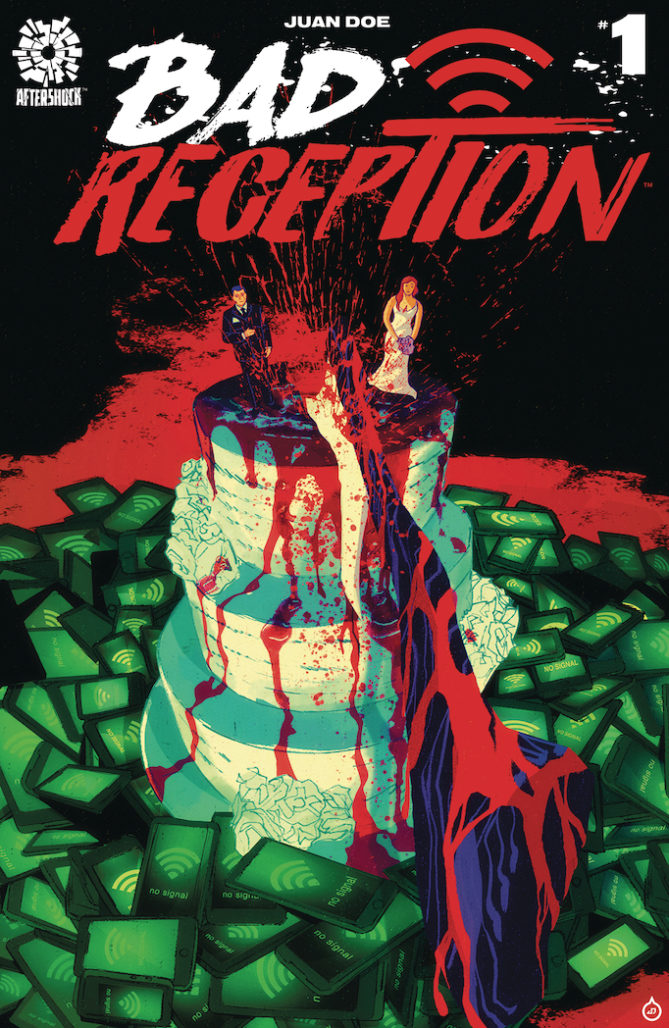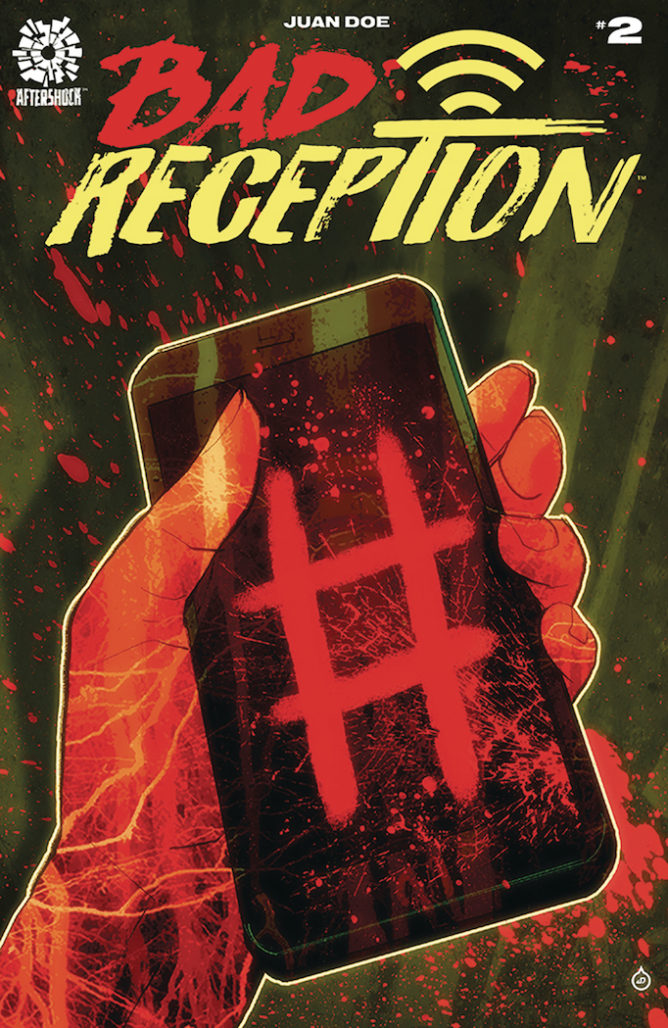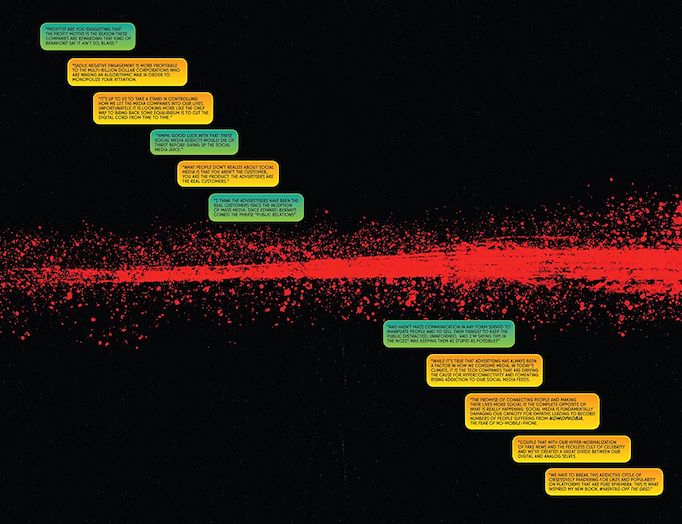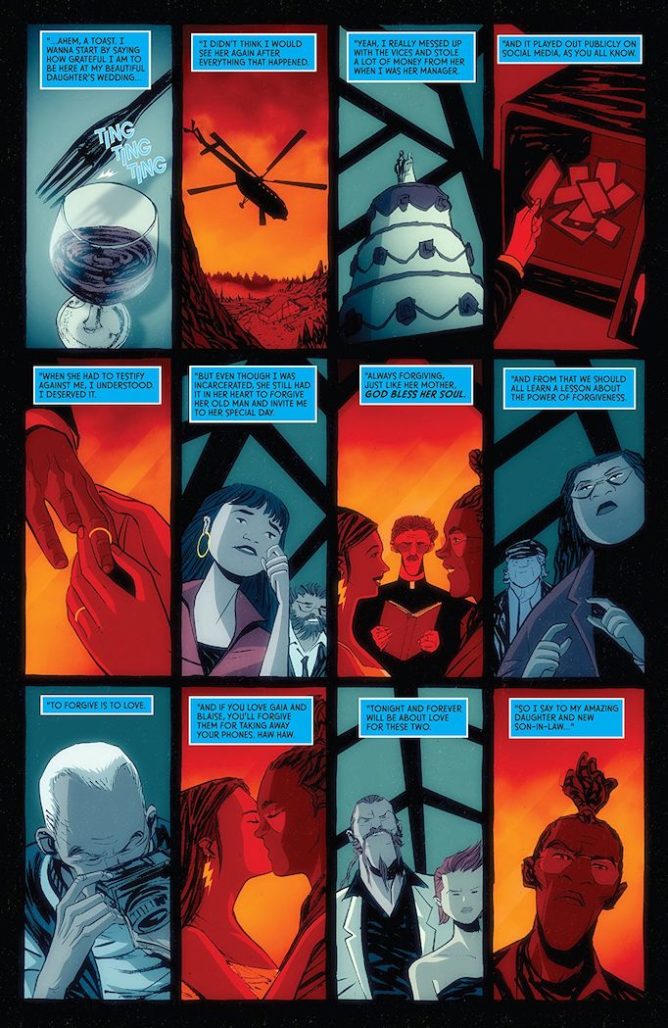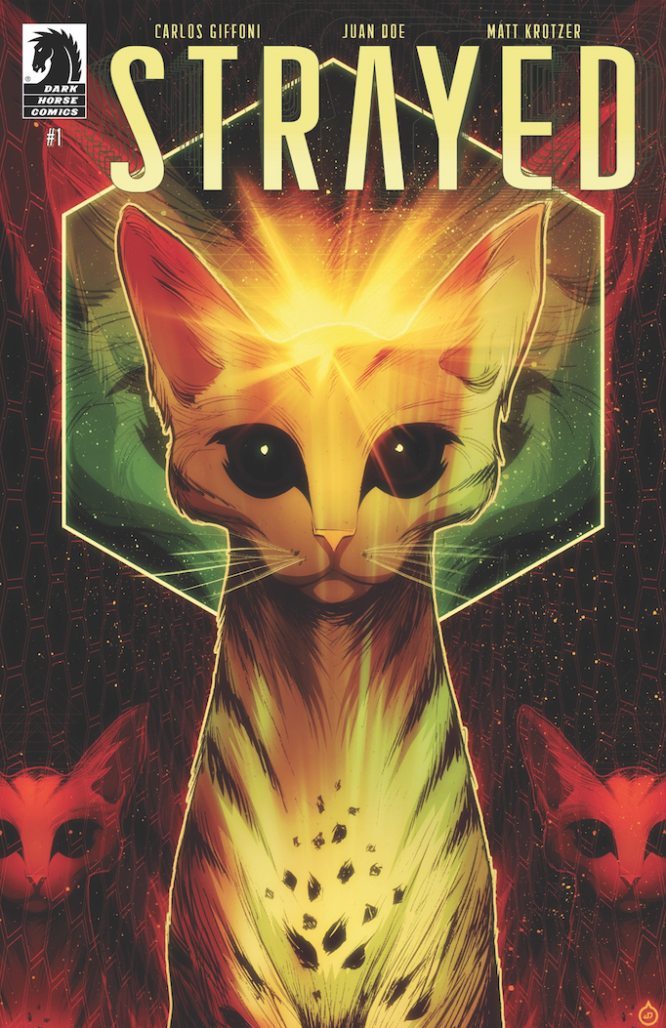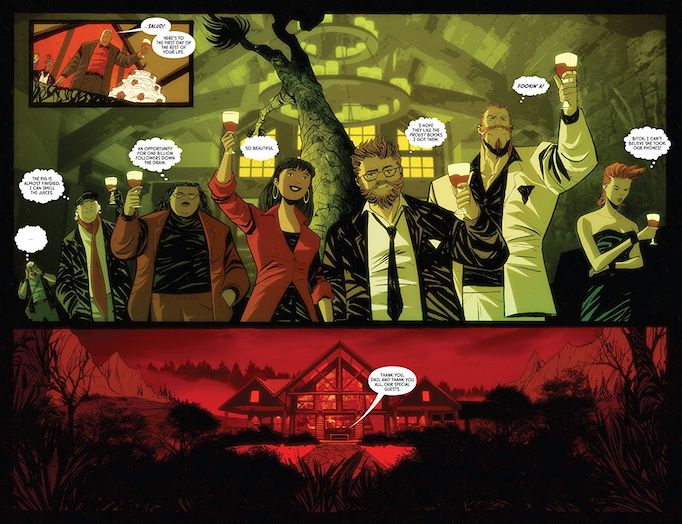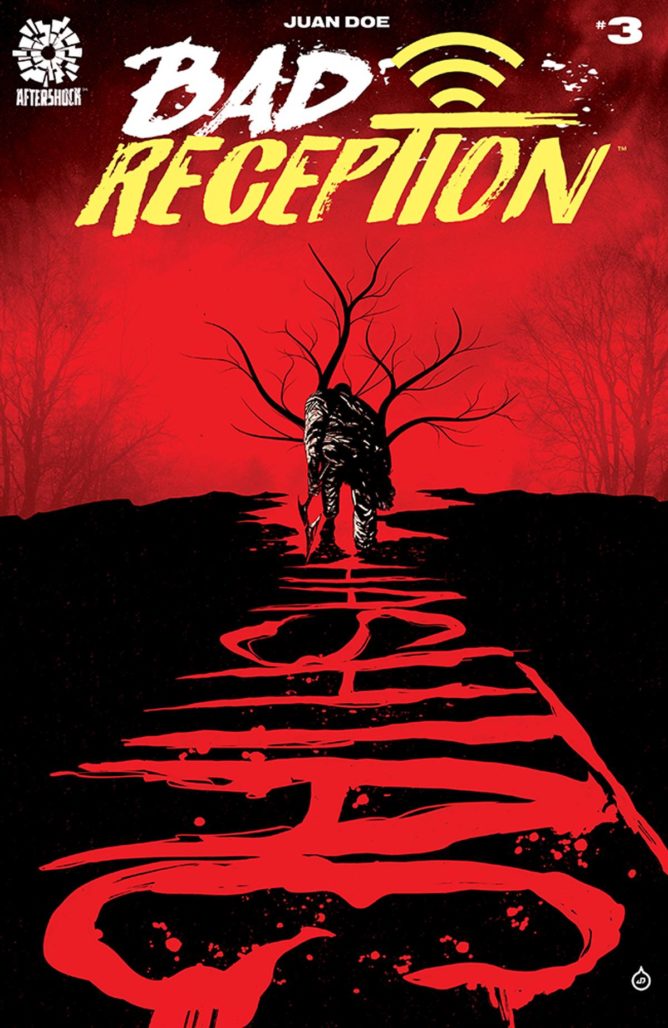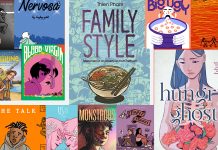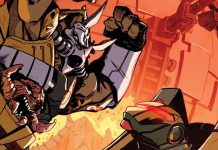Juan Doe has one of the most unique art styles I can find in mainstream comics. You would never mistake his comics for the work of another artist. His art boasts a distinct energy thanks to his distinct linework and colors that perfectly capture the right mood for the contents and subtext of the story.
Upon discovering that he was writing and drawing his own comic, I was very excited to see what Doe could do with something fully his own. Bad Reception exceeded my expectations with writing that feels as confident as the visual storytelling.
I knew I wanted to speak to Doe about his work and his first outing as a writer/artist, so I was thrilled to set something up. You can read my interview with Juan Doe below.
Most of your work in comics has been as an illustrator. Was it daunting or liberating to write and draw your own series?
Both. Writing wasn’t necessarily something I was pining for or even thinking about. It was just a moment of happenstance that I got a chance to pitch this idea, never actually believing anyone would be interested in it. When I got the green light from Aftershock there was a moment of utter doubt, now I had to actually write this out and tell a story. Fortunately, I do like challenges so I just focused on executing this project to the best of my ability and enjoying the process.
Self-promotion is central to the plot of Bad Reception. How do you feel about promoting yourself and your work over social media?
Admittedly I am terrible at self-promotion, it’s something I’m trying to get better at but it’s a matter of time management and philosophical recalibration. I spend most of my waking hours working so it’s something I have to get better at incorporating into my work routine. I’m amazed by people who effortlessly excel at social media, it’s definitely important for creators today.
How did those feelings play into the creation of Bad Reception?
Well, it certainly played a big role in the research I did for Bad Reception. I read a lot of Jaron Lanier and Tristan Harris as well as books on big data and tech companies and how these companies in unison with our personal information have become such powerful forces in our society today. There’s a lot of fundamental discussions as to the positive or negative effects of social media, this helped me in creating a framework for the characters so that I could play with some storytelling elements that are rooted in this ongoing discussion.
What makes social media such fertile ground for a horror story?
I think a lot of horror stories are based on very simple and primal functions, our fear of harm and death being the most obvious. I think with social media, there is this sense that you can amplify your thoughts and feelings to the purview of the whole world and that is a very powerful thing. With Bad Reception, we’re taking away that option and bringing it back to a very simple premise, the will to survive at any cost.
Beginning a series with pages of text over largely empty backgrounds is an interesting storytelling decision, especially for someone both writing and drawing the comic. What made you go that route?
That was purely incidental. The original pitch for Bad Reception was for Webtoons, which offers a completely different dynamic for creating a comic story which is the infinite scrolling they incorporate. The opening of Bad Reception on Webtoons functions as a super pan shot so that felt like something that could work well on that network. Ultimately they passed on the project so when I decided to pitch it as a traditional comic I wasn’t thinking I would use that opening but I decided to see what it would look like. It ended up being 8 pages and I thought why not go for it. What was important was the dialogue I was writing as a way to set up the rest of the book especially issue 1. The cool thing was that Aftershock was in complete support of using that opening and they even gave me an additional 6 pages so I could still have some flexibility in getting enough story content in play for issue 1. Ultimately I thought it worked out well and it let me know that I could play with some non-traditional ways to tell this story in a comic book format.
The first issue is made up almost entirely of double-page spreads. What inspired that design choice?
Aside from following the opening which is made up of double-page spreads and is really just one visual, I decided to go for double-page spreads to try out a dual narrative and see how that would work. It was definitely a bit of experimenting and I wanted to see if it would be possible to pull off without cluttering the story. Again, this is part of the creative support I received from Aftershock in crafting this story, especially issue 1.
One of my favorite things about your art is how the color temperature shifts between scenes. How carefully do you consider your color palette in relation to what’s taking occurring within the story?
For me, color has always been about representing mood more than a realistically colored
scene. With this book, I hone in on that more than ever considering I’m writing the story as well. It’s something I’ve done on most of my books so it felt very natural to work that way with my own story and sort of let the art and mood guide the story as well as the words.
Bad Reception is publishing simultaneously with both Strayed and Dark Ark: After the Flood. How do you manage to pencil, ink, and color multiple series at a time?
Time management is one of the keys to my work. I really do focus almost obsessively on something when I’m working on it, hence my inability to be a successful participant in social media. In this case, Strayed was completed earlier in the year so I’m currently managing 2 books at a time but it still comes down to focus and zoning in on getting the job done while eliminating distractions.
Bad Reception is, if my math is correct, your fifth book with Aftershock. What makes the publisher such a good home for your work?
I’ve stressed before that Aftershock has been a great incubator for allowing the creator’s vision to shine through. I experienced that just working from the art side but now that I’m writing I still have the same support system and for that I am grateful. That’s not to say that everything I do works out perfect and I like having a guiding hand with my editor when it’s needed but with that kind of flexibility the publisher offers I think you can tell some really interesting stories that might not necessarily work with other publishers.
The plot seems like a great high concept for a movie, a film director even references that within the story. Have you received interest from Hollywood in adapting the series?
I’ve heard from a few people that it feels like a movie or something you’d see on Netflix. That’s cool that people may feel that way, for me first and foremost it is a comic story. But since I firmly believe that the most exciting part of comics today is the indie side, we’re getting to see a plethora of stories that exist outside the traditional canon of superhero stories that we’re used to associating with American comic books. I think this helps people normalize the idea that a good comic book story doesn’t have to be about superheroes and that it can encompass a wide range of genres that can work on an equal footing to some of the big brothers of the storytelling medium, namely film and television. So ultimately, storytelling will always be king, regardless of how it’s presented.
Has your experience creating Bad Reception given you the bug to write more comics?
That is a resounding yes! Now I can’t stop coming up with ideas. I feel this is an evolution of everything I’ve been working on as a creator and, hopefully, I’ll have more opportunities to tell stories that I feel very connected to.
Thanks to Juan Doe for a fascinating interview. Follow him on Twitter @juandoe and visit his website juandoe.com.
Matt Chats is a weekly interview series featuring discussions with a creator or player in comics, diving deep into industry, process, and creative topics. Find its author, Matt O’Keefe, on Twitter and Tumblr. Email him with questions, comments, complaints, or whatever else is on your mind at [email protected].


